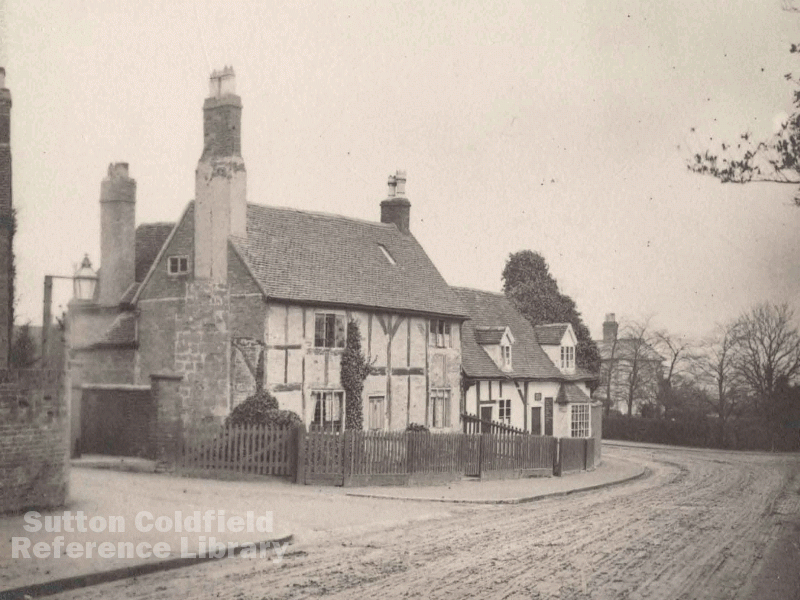
Miss Bracken says that the name Maney derives from the Celtic “meini”, meaning stone, in her 1860 History of the Forest and Chase of Sutton Coldfield. A prehistoric settlement at Maney is a possibility, as it lies where building stone outcrops next to the ancient saltway from Droitwich to York before it crosses the marshy valley of the E Brook.
Maney flourished in the eleventh century, having an open field system of farming with each villager holding strips or selions of land in each of the open fields; the villagers lived in houses scattered at the edges of the village green which extended from Driffold to St. Peters Church. Maney was one of the original Quarters of Sutton, the villagers owing suit at the Manorial Court of Sutton, and linked to the centre by a causeway across the valley.
In the middle of the fourteenth century the open field system in Maney began to break down, possibly as a result of depopulation after the Black Death of 1347-8, a plague which killed half the people of England. Charters dated 1363 record the buying and selling of selions of land in Middle Maney Field (between Maney Hill Road and Coles Lane), ploughland was put down to pasture, and small farms began to be swallowed up into larger estates. The Smithy and, later, the stone house were built on the former village green.
By 1531 William Alen was living in a mansion house in Maney, sometimes known as Maney Hall, which stood near the corner of Pilkington Avenue opposite Beeches Walk. In 1531 he purchased twenty strips of land and some fields to add to his estate; eventually this estate was purchased for £320 by Simon Perrot in 1583. Simon Perrot lived at Maney Hall but was deeply in debt, and his Maney estate was purchased by Emmanuel College, Cambridge, in 1594 for £500.
Two owners had most of the land in Maney in 1824 - James Scott and Emmanuel College both had just over 130 acres. James Scott had Maney Farm at Maney Corner with 130 acres of land, but Emmanuel College’s land was leased out to twelve different farmers, and Maney Hall had long ago been demolished. The nature of Emmanuel College’s estate had hardly changed over the centuries, whereas the Maney Farm estate had been consolidated into a single unit.